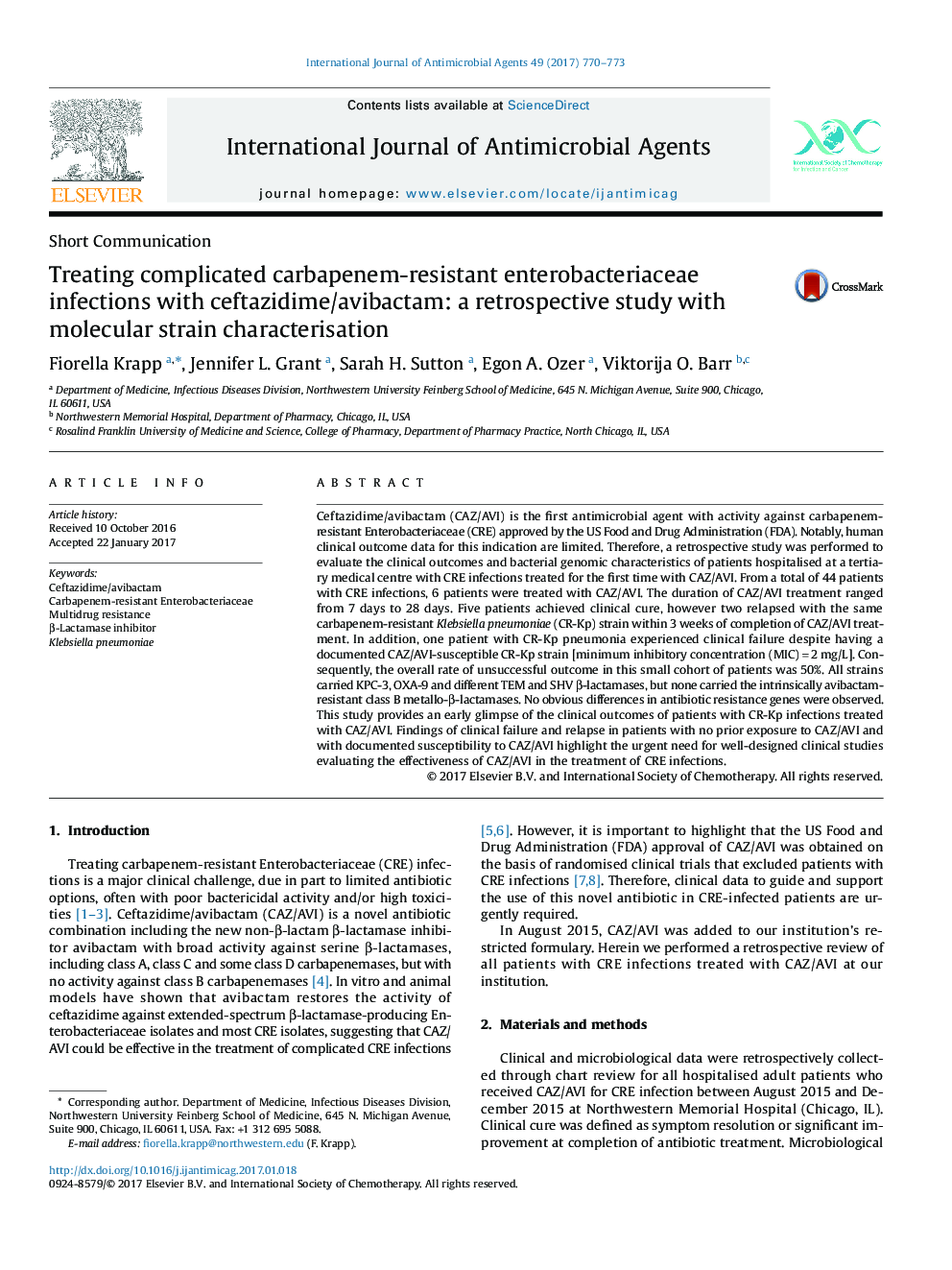| کد مقاله | کد نشریه | سال انتشار | مقاله انگلیسی | نسخه تمام متن |
|---|---|---|---|---|
| 5666921 | 1591742 | 2017 | 4 صفحه PDF | دانلود رایگان |
- Clinical data to guide or support the use of CAZ/AVI in CRE-infected patients are limited.
- Three (50%) of six CAZ/AVI-treated patients with CRE had unsuccessful outcomes (two early relapses, one clinical failure).
- Relapses were confirmed to be caused by the same CRE index strain by whole-genome sequencing.
- No differences in MIC or antibiotic resistance genes were observed between failure/relapse strains and the other strains.
- An unexpected high rate of unsuccessful outcome among CAZ/AVI-susceptible CRE infections warrants further study.
Ceftazidime/avibactam (CAZ/AVI) is the first antimicrobial agent with activity against carbapenem-resistant Enterobacteriaceae (CRE) approved by the US Food and Drug Administration (FDA). Notably, human clinical outcome data for this indication are limited. Therefore, a retrospective study was performed to evaluate the clinical outcomes and bacterial genomic characteristics of patients hospitalised at a tertiary medical centre with CRE infections treated for the first time with CAZ/AVI. From a total of 44 patients with CRE infections, 6 patients were treated with CAZ/AVI. The duration of CAZ/AVI treatment ranged from 7 days to 28 days. Five patients achieved clinical cure, however two relapsed with the same carbapenem-resistant Klebsiella pneumoniae (CR-Kp) strain within 3 weeks of completion of CAZ/AVI treatment. In addition, one patient with CR-Kp pneumonia experienced clinical failure despite having a documented CAZ/AVI-susceptible CR-Kp strain [minimum inhibitory concentration (MIC)â=â2âmg/L]. Consequently, the overall rate of unsuccessful outcome in this small cohort of patients was 50%. All strains carried KPC-3, OXA-9 and different TEM and SHV β-lactamases, but none carried the intrinsically avibactam-resistant class B metallo-β-lactamases. No obvious differences in antibiotic resistance genes were observed. This study provides an early glimpse of the clinical outcomes of patients with CR-Kp infections treated with CAZ/AVI. Findings of clinical failure and relapse in patients with no prior exposure to CAZ/AVI and with documented susceptibility to CAZ/AVI highlight the urgent need for well-designed clinical studies evaluating the effectiveness of CAZ/AVI in the treatment of CRE infections.
Journal: International Journal of Antimicrobial Agents - Volume 49, Issue 6, June 2017, Pages 770-773
